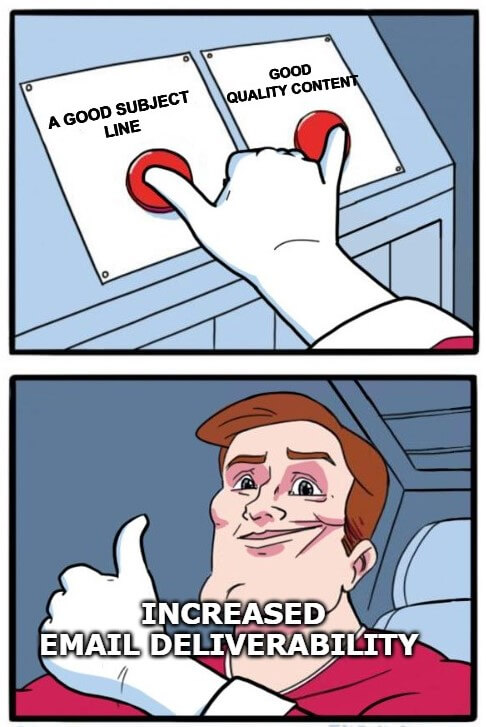You don’t have to put your entire being through an intense workout and morning routines or scrape banana peels on your skin to become a better, more productive version of yourself. Sometimes, just getting your tasks in order is all you need for that much-needed dopami
Email Management: How to Organize Your Inbox for Maximum Productivity
A comprehensive guide to effective email management strategies and tools that help professionals organize their inbox and enhance productivity.
Key takeaways
Streamlined Email Management: Email management strategies, such as filters and prioritization, help structure and organize incoming messages, making them easier to manage.
Reduced Stress and Time Savings: Using automation and email management tools minimizes time spent on emails, allowing more focus on important tasks.
Maintaining Inbox Zero: By applying step-by-step strategies to achieve inbox zero, you can reduce clutter, maintain order, and decrease distractions.
Mastering email management: A guide to inbox efficiency
Emails can quickly pile up, creating an overwhelming sense of chaos in your inbox. For many professionals, email management becomes a time-consuming task that reduces productivity and increases stress. This article presents practical strategies and tools for managing your inbox efficiently, covering everything from inbox zero and email filters to automation. Regaining control of your inbox will help you reduce the time spent on emails and focus on tasks that truly matter.
Common email management challenges
Managing emails can be challenging, especially when dealing with high volumes or poor organization. Here are some common issues and their effects on productivity:
- Email Overload: Receiving too many emails daily can lead to missed messages, reduced response times, and increased stress.
- Disorganization: Without a structured system, emails can easily get lost, resulting in missed follow-ups and lost productivity.
- Time-Consuming Management: Constantly checking and responding to emails can break concentration and take time away from other important tasks.
Achieving inbox zero
Inbox zero is a method where you strive to keep your inbox empty or nearly empty. It’s not just about deleting emails but organizing them effectively so that nothing critical is overlooked.
Steps to Reach Inbox Zero:
- Set a Designated Time for Emails: Dedicate specific times during the day for checking and responding to emails. This reduces interruptions and keeps you focused on other tasks.
- Sort and Delete: Go through your inbox and archive or delete old, irrelevant messages.
- Label and Prioritize: Use labels or folders to categorize emails by priority or topic, making it easy to find important emails.
- Use Filters: Set up email filters to automatically sort emails into folders, flag priority emails, or redirect less important ones. Learn more about setting up efficient workflows in our guide on "Workflow Templates: How to Optimize Processes for Maximum Efficiency".
Organizing your inbox with folders and labels
Organizing emails into folders and adding labels is one of the simplest yet most effective methods to keep your inbox manageable. Here are some tips:
- Create Relevant Folders: Divide emails into main categories, such as “Work,” “Personal,” “Follow-up,” and “Receipts.”
- Set Up Automatic Sorting Rules: Most email clients, such as Gmail or Outlook, allow users to create rules that automatically direct emails to specific folders. For example, all project-related emails can go directly into the “Projects” folder.
- Use Flags and Stars: For emails that require immediate attention, use flags or stars to keep them at the top of your priority list.
Leveraging email filters and automation
Using email filters and automation tools can streamline inbox management by organizing incoming messages based on rules that you define.
- Automated Filters: Use filters to categorize, mark as read, or move emails to specific folders based on keywords or sender.
- Autoresponders: Set up autoresponders to let people know you’ve received their email and will respond as soon as possible. This is especially useful when you’re out of office or handling a large volume of emails.
- Unsubscribe from Unwanted Emails: Take time to unsubscribe from mailing lists and newsletters that are no longer relevant. Keeping only essential emails can significantly reduce clutter.
Email management tools for increased productivity
There are many tools available that make email management simpler and more efficient. Here are some popular options:
- Clean Email: A tool that categorizes and deletes bulk emails, helping you reach inbox zero faster.
- SaneBox: Uses AI to sort emails into priority categories and moves nonessential emails to a separate folder.
- Mailbird: An all-in-one platform that combines emails, calendars, tasks, and more to streamline productivity.
Setting boundaries for email time
An essential part of managing email effectively is setting boundaries on the time you spend in your inbox:
- Turn Off Notifications: Avoid interruptions by turning off email notifications on both your phone and desktop.
- Batch Process Emails: Rather than constantly checking emails, process them in batches (e.g., three times a day).
- Limit Reply Time: Set a specific amount of time for replying to emails, helping you stay on task without getting sidetracked.
Visual aid: Email management statistics
The chart shows key metrics of effective email management systems. Time management achieves 80% efficiency, email organization reaches 65% effectiveness, response efficiency hits 75%, and task prioritization maintains 70% optimization.

Interesting fact 
Did you know? The concept of inbox zero was popularized by productivity expert Merlin Mann in the early 2000s. He argued that reaching and maintaining inbox zero can reduce stress and improve focus, helping professionals handle email more strategically.
To improve your overall task management, explore "Workflow Templates: How to Optimize Processes for Maximum Efficiency", which provides insights into organizing tasks effectively. If you're interested in learning more about planning tools, read "What is a Gantt Chart? A Guide to Using Gantt Charts for Project Management" for visualizing workflows efficiently.
Conclusion
Effective email management is key to regaining control over your inbox and improving productivity. By using strategies like inbox zero, email filters, and automation tools, you can reduce time spent on emails and keep your inbox organized. Implement these tips, and you’ll find yourself with more time for meaningful tasks.
Recommended Reading 

"Getting Things Done: The Art of Stress-Free Productivity"
An essential read on managing tasks efficiently, including email workflows.
On Amazon
"The Checklist Manifesto: How to Get Things Right"
Offers valuable insights on structuring tasks to minimize errors and maximize efficiency.
On Amazon
"Atomic Habits: An Easy & Proven Way to Build Good Habits & Break Bad Ones"
Though not focused solely on email, this book provides practical advice on habit formation for better productivity.
On Amazon






